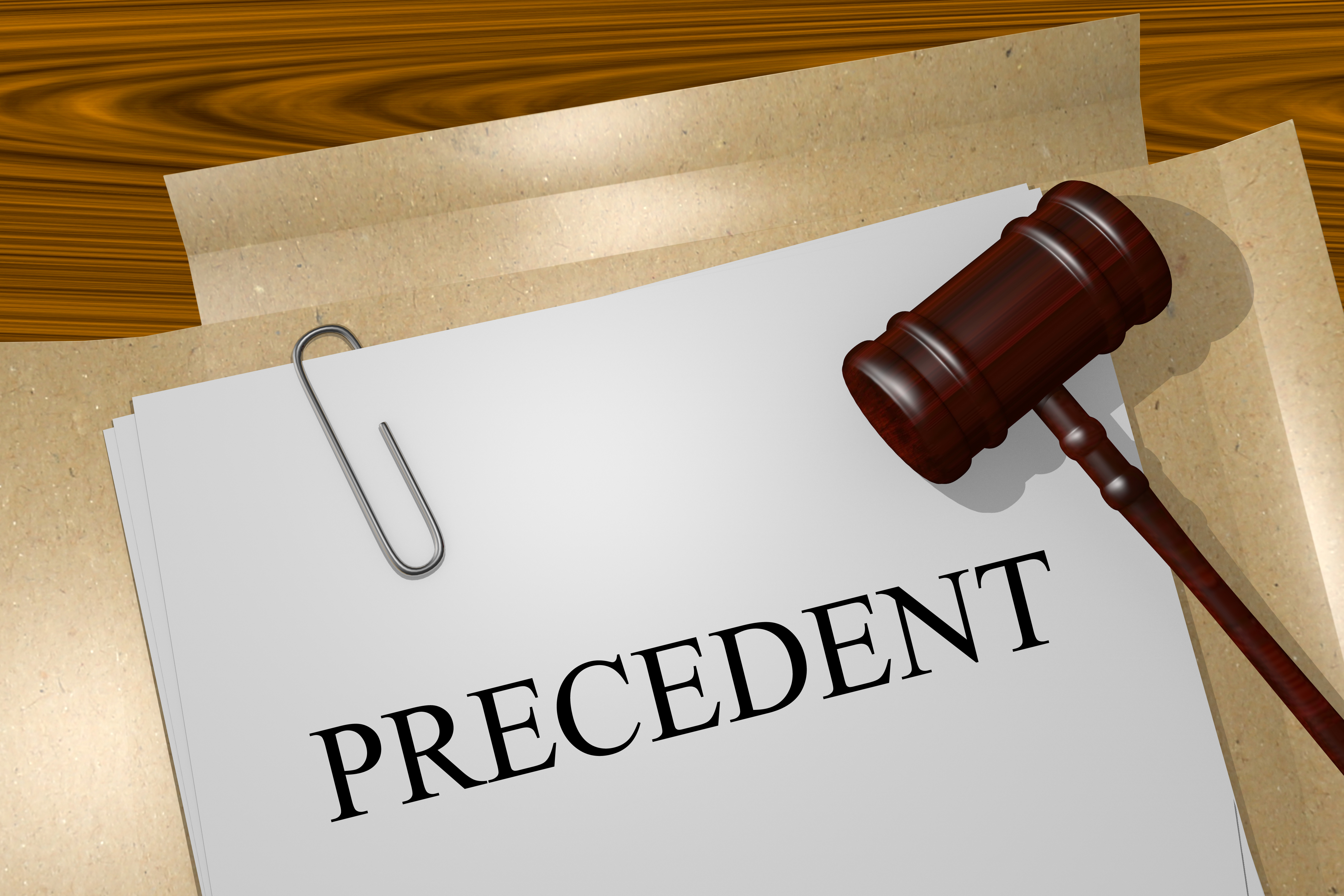Sequoia Wins Reversal of Section 101 Invalidity Ruling But CAFC Says Red Hat Customers Did Not Infringe
“While Red Hat had argued that the specification employed an open-ended definition for computer-readable media, the appellate court found that the context of the claim language directed to hardware storage made it clear that ‘computer-readable recording medium’ could not encompass transitory media.”
On April 12, the U.S. Court of Appeals for the Federal Circuit (CAFC) issued a precedential ruling in Sequoia Technology, LLC v. Dell, Inc. reversing part of a District of Delaware ruling invalidating digital storage patent claims owned by Sequoia under 35 U.S.C. § 101. Although the ruling restores Sequoia’s rights to the patent claims at issue in the case, the Federal Circuit affirmed portions of the district court’s claim construction order that had supported a finding that Dell and other defendants did not infringe upon Sequoia’s asserted patent claims.
Judge Stark Invalidates Computer-Readable Medium Claims Under In re Nuijten
At issue on appeal is U.S. Patent No. 6718436, Method for Managing Logical Volume in Order to Support Dynamic Online Resizing and Software Raid and to Minimize Metadata and Computer Readable Medium Storing the Same. The invention claimed by the ‘436 patent addresses problems in conventional management of a logical volume, or virtual disk drive, constructed within Redundant Array of Independent Disks (RAID) architecture for storing the same data on multiple disks. Specifically, the claimed method addresses the large size of metadata files stored on RAID-format logical volume, which can cause delays to system booting time.
Sequoia, the exclusive licensee of the ‘436 patent that is owned by Electronics and Telecommunications Research Institute (ETRI), first filed suit against computing company Dell and other customers of enterprise software developer Red Hat. The accused product in that case was Red Hat’s software tool for resizing logical volumes with units smaller than a whole disk partition. Red Hat later filed a suit for declaratory judgment of invalidity and noninfringement of the ‘436 patent.
After those cases were consolidated, U.S. District Judge Leonard Stark invalidated claims 8 through 10 of the ‘436 patent based on the construction of the claim term “computer-readable recording medium,” which included transitory medium according to the interpretation offered by Red Hat and accepted by the district court. While the specification of the ‘436 patent did not include any transitory media in its non-exhaustive list of computer-readable recording media, Judge Stark credited extrinsic evidence offered by an expert witness from Red Hat in the case. Under the Federal Circuit’s 2007 decision in In re Nuijten, transitory media like computer signals are not directed to patentable subject matter under Section 101, leading the district court to enter its invalidity ruling.
Context is Key to Construction
In rejecting the district court’s claim construction leading to Section 101 invalidity, the Federal Circuit noted that the claim language actually recites the narrow limitation “computer-readable recording medium storing instructions.” Because transitory signals do not persist over time, a person of ordinary skill in the art would not understand the use of such signals to store instructions in memory systems. The lack of any recitation of transitory media in the ‘436 patent’s specification further supported this conclusion, the Federal Circuit held. While Red Hat had argued that the specification employed an open-ended definition for computer-readable media, the appellate court found that the context of the claim language directed to hardware storage made it clear that “computer-readable recording medium” could not encompass transitory media.
While the district court had relied in part on extrinsic evidence from Red Hat’s expert testimony and other U.S. patents, the Federal Circuit found that reliance to be inconsistent with the intrinsic evidence of the patent record itself. The appellate court found that Judge Stark should have discounted the expert testimony proffered by Red Hat as it was at odds with “the claim construction mandated by… the written record of the patent,” citing language from the Federal Circuit’s seminal ruling in Phillips v. AWH Corporation (2005).
Further, the Federal Circuit discounted definitions of “computer-readable recording medium” from 34 contemporaneous patents and patent applications, noting that these documents did not establish a plain and ordinary meaning for that claim term. Finally, the Federal Circuit rejected Red Hat’s construction arguments surrounding a February 2010 memo on subject matter eligibility of computer readable media by then- U.S. Patent and Trademark Office (USPTO) Director David Kappos, finding that the memo did not create a presumption that computer-readable media claims must be amended with “non-transitory” language to overcome a Section 101 issue.
Red Hat, Enterprise Software Customers Still Evade Infringement Claims
Sequoia, represented by former USPTO Director and Irell & Manella Partner Andrei Iancu, also argued on appeal that the district court had erred in construing the claim terms “disk partition” and “logical volume,” both of which supported the noninfringement ruling. The Federal Circuit pointed to numerous instances of claim language from the ‘436 patent in which whole disk partitions, not portions or “extents,” form the claimed logical volume. As well, the patent’s specification explains that the use of disk partitions to form the logical volume achieves the purpose of minimizing the size of metadata files. The specification also states that the disk partition is the “minimum unit” of the logical volume, and while the Federal Circuit acknowledged that patent claims are not to be limited based on preferred embodiments within the specification, the appellate court found that this embodiment bolstered the conclusion supported by the plain claim language.
The Federal Circuit also found that statements made by patent owner ETRI to the USPTO regarding the ‘436 patent further clarified that disk partitions were the smallest construction unit of the claimed logical volumes. ETRI had distinguished prior art references asserted by Red Hat in an inter partes review (IPR) petition by noting that those references use extents or subsets of disk drives to form logical volumes. While Sequoia argued that ETRI was merely pointing out that the prior art references lacked any disk partitions, the Federal Circuit found that ETRI’s statements during IPR that logical volumes in the ‘436 patent involved adding or removing extents “at the level of disk partitions” clearly eliminated a construction allowing extents themselves to make up logical volumes.
Sequoia also advanced a construction argument regarding a claim 1 limitation reciting an “extent allocation table for indicating whether each extent in the disk is used or not used.” The patent owner contended that “used or not used” indicated that some extents in the allocation tables were not utilized to construct the logical volume. While the claim language supported neither Sequoia nor Red Hat’s proposed construction, the Federal Circuit noted that the preferred embodiment disclosed by the ‘436 patent’s specification suggested that extents from the allocation table are “used or not used” for storage, not to construct the logical volume. The Federal Circuit also found that a paper on volume management in storage area network (SAN) environments written by the ‘436 patent’s inventors and cited by the patent further established that an extent is “used” when it stores data. While the invention claimed by the ‘436 patent differed from the system disclosed in the SAN environment paper, this definition aligned with the Federal Circuit’s construction of “used or not used” as supported by the patent’s specification
Image Source: Deposit Photos
Image ID: 86267474
Author: Premium_shots
Steve Brachmann
Steve Brachmann is a graduate of the University at Buffalo School of Law, having earned his Juris Doctor in May 2022 and served as the President of the Intellectual Property […see more]




![Form I-824 Explained | Filing Tips, Fees & Processing Time [2023] Form I-824 Explained | Filing Tips, Fees & Processing Time [2023]](https://www.immi-usa.com/wp-content/uploads/2021/07/VisaNation-4-300x251.png)


